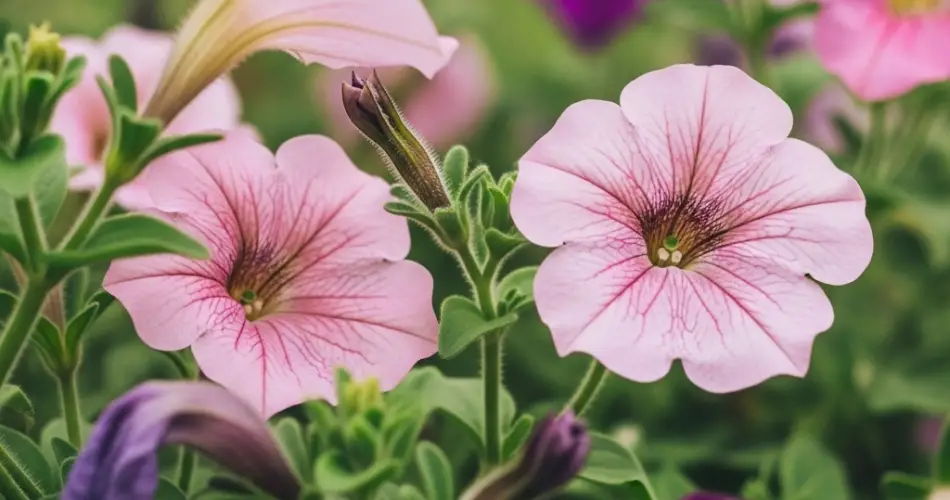The Best Way to Sow Petunias: No Thinning, No Transplanting – From Seed to Bloom Made Simple
But there is an easier way. You can grow petunias from seed without the need for thinning or transplanting, using a simple, stress-free method that takes the plant all the way from sowing to flowering in the same container. This technique saves time, reduces plant shock, and leads to strong, healthy blooms.
Why Grow Petunias Without Transplanting?
The traditional way of growing petunias involves sowing seeds densely in trays or pots, followed by pricking out (also called “picking” or transplanting) the seedlings into separate containers. While this method works, it can be labor-intensive and risky for beginners. Petunia seedlings are fragile and don’t tolerate root disturbance well
By sowing the seeds directly into their final growing containers, you eliminate the stress of transplanting and provide each plant with space to develop strong roots from the start.
What You’ll Need
-
-
Petunia seeds (choose pelleted seeds if possible for easier handling
-
-
Seed starting mix (light, well-draining, and sterile)
-
Small cups, seed trays with partitions, or multi-cell containers
-
Spray bottle for misting
-
Clear plastic lids or plastic wrap
-
Grow lights or a sunny windowsill
Step-by-Step Instructions
1. Choose the Right Container
Use small individual containers or seed trays with divided cells. The goal is to plant 1–2 seeds per container, so each plant can grow in its own space without competition.
2. Prepare the Soil
Fill each container with moist seed starting mix. Do not use regular garden soil, as it may be too heavy and can cause poor germination. Lightly press the soil to create a level surface
3. Sow the Seeds
Petunia seeds are extremely small, so handle them with care. If using pelleted seeds, they are easier to see and place. Gently press one seed into the surface of the soil in each container. Do not cover the seeds with soil, as petunia seeds need light to germinate.
4. Mist and Cover
Using a spray bottle, mist the soil surface gently to moisten the seeds without displacing them. Then, cover the container with a clear plastic lid or wrap to create a mini-greenhouse effect.
5. Provide Light and Warmth
Place the containers in a warm, bright spot. Ideal temperature for germination is around 22–25°C (72–77°F). Use grow lights if natural light is limited. Ensure the seeds receive at least 12–14 hours of light per day.
6. Germination and Growth
Petunia seeds typically germinate within 5–10 days. Once the seedlings appear, remove the plastic cover and continue to provide bright light to prevent leggy growth.
Because the seeds were sown in individual spaces, there’s no need for thinning or transplanting. Each seedling will have enough room to grow strong roots right from the beginning.
Watering and Care Tips
-
-
Water carefully: Use a spray bottle or a bottom-watering method to avoid damaging young seedlings.
-
Avoid overwatering: Petunias dislike soggy conditions. Let the top layer of soil dry slightly between waterings.
-
-
Fertilize lightly: Once seedlings develop 2–3 true leaves, begin feeding with a diluted liquid fertilizer every 10–14 days.
When to Move Outdoors
Once the danger of frost has passed and your petunias have developed a good root system and a few sets of true leaves, they can be moved outside. Harden them off first by gradually introducing them to outdoor conditions over 5–7 days.
If you planted directly in hanging baskets or decorative pots, simply relocate them to their final outdoor position. Otherwise, transplant them carefully, keeping the root ball intact to avoid transplant shock.
Bloom Time
Petunias typically begin blooming 10–12 weeks after sowing, depending on the variety and growing conditions. By starting early indoors using this no-pick method, you’ll enjoy vibrant blooms by late spring or early summer.
Advantages of the No-Transplant Method
-
-
Less stress on seedlings: No root disturbance means healthier, more vigorous plants.
-
Saves time and effort: Fewer steps compared to traditional sowing and transplanting.
-
-
Ideal for beginners: Easier and less risky than handling tiny seedlings during transplant.
-
Cleaner growth: Less mess, fewer tools needed, and minimal handling of soil.
Final Thoughts
Growing petunias from seed doesn’t have to be complicated. With this straightforward, no-pick method, anyone can enjoy the full life cycle of these beautiful flowers—from tiny seeds to vibrant blossoms—without transplanting stress. Just a bit of care and patience, and your home or garden will be filled with colorful blooms all summer long.
